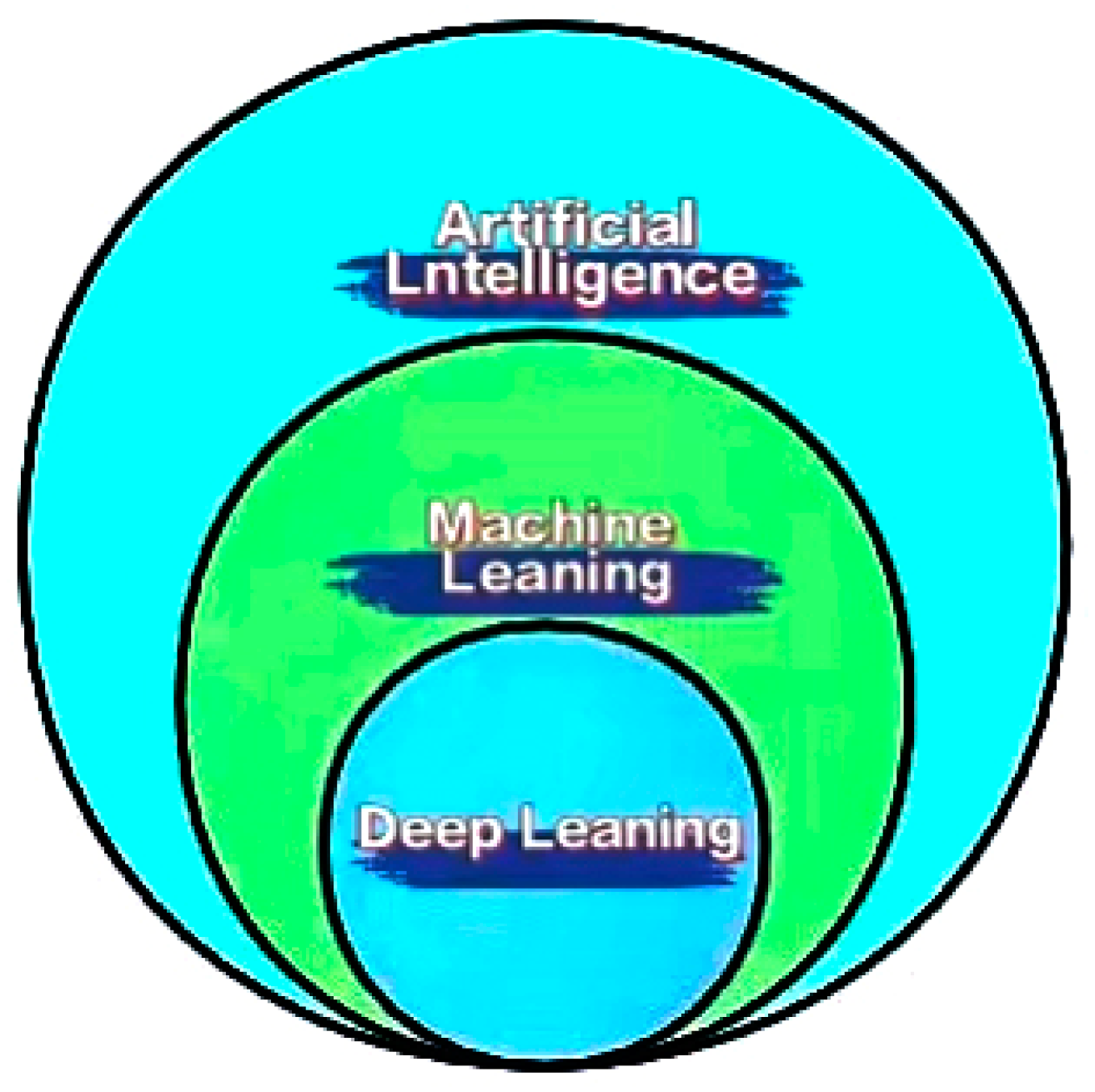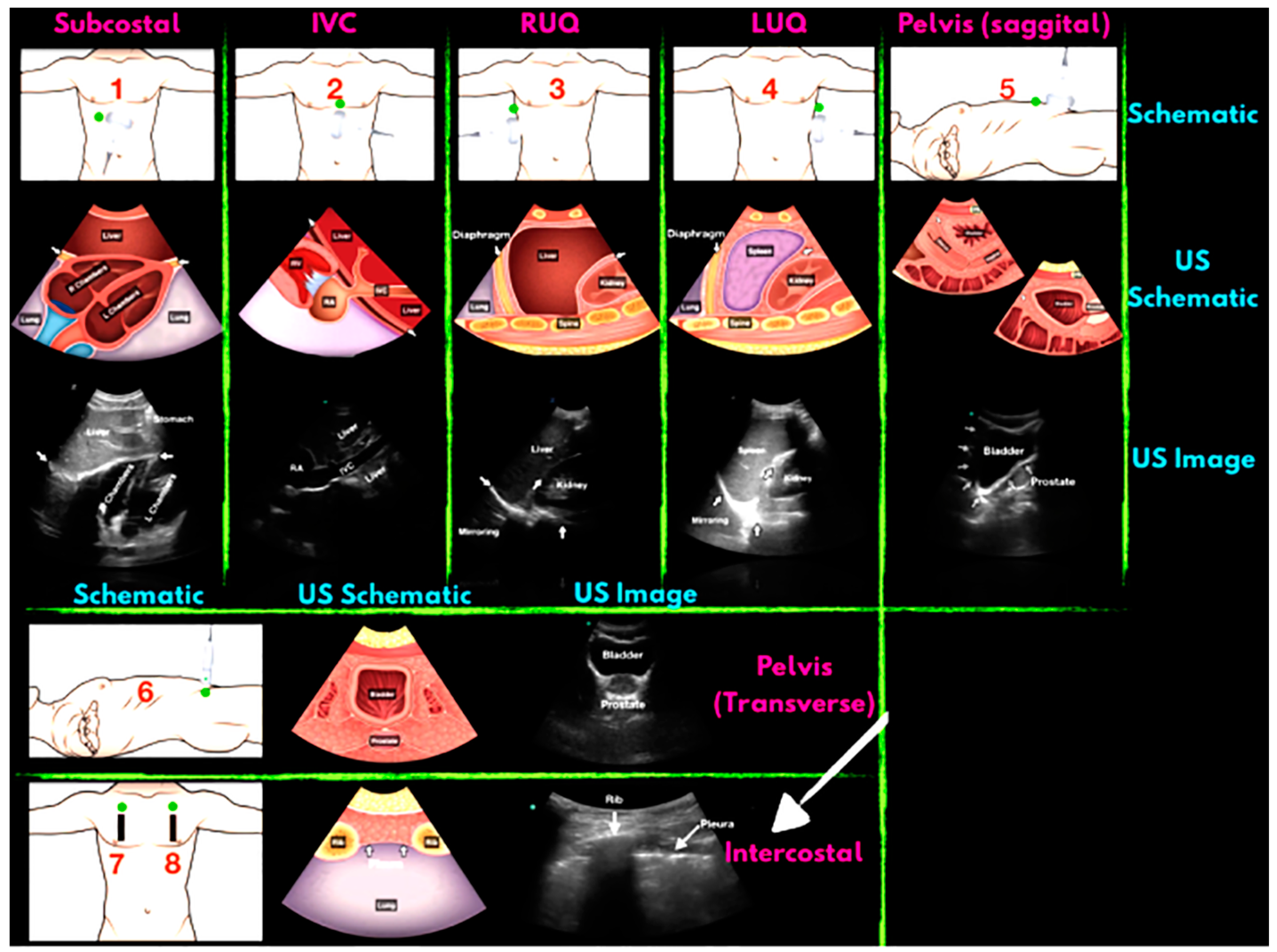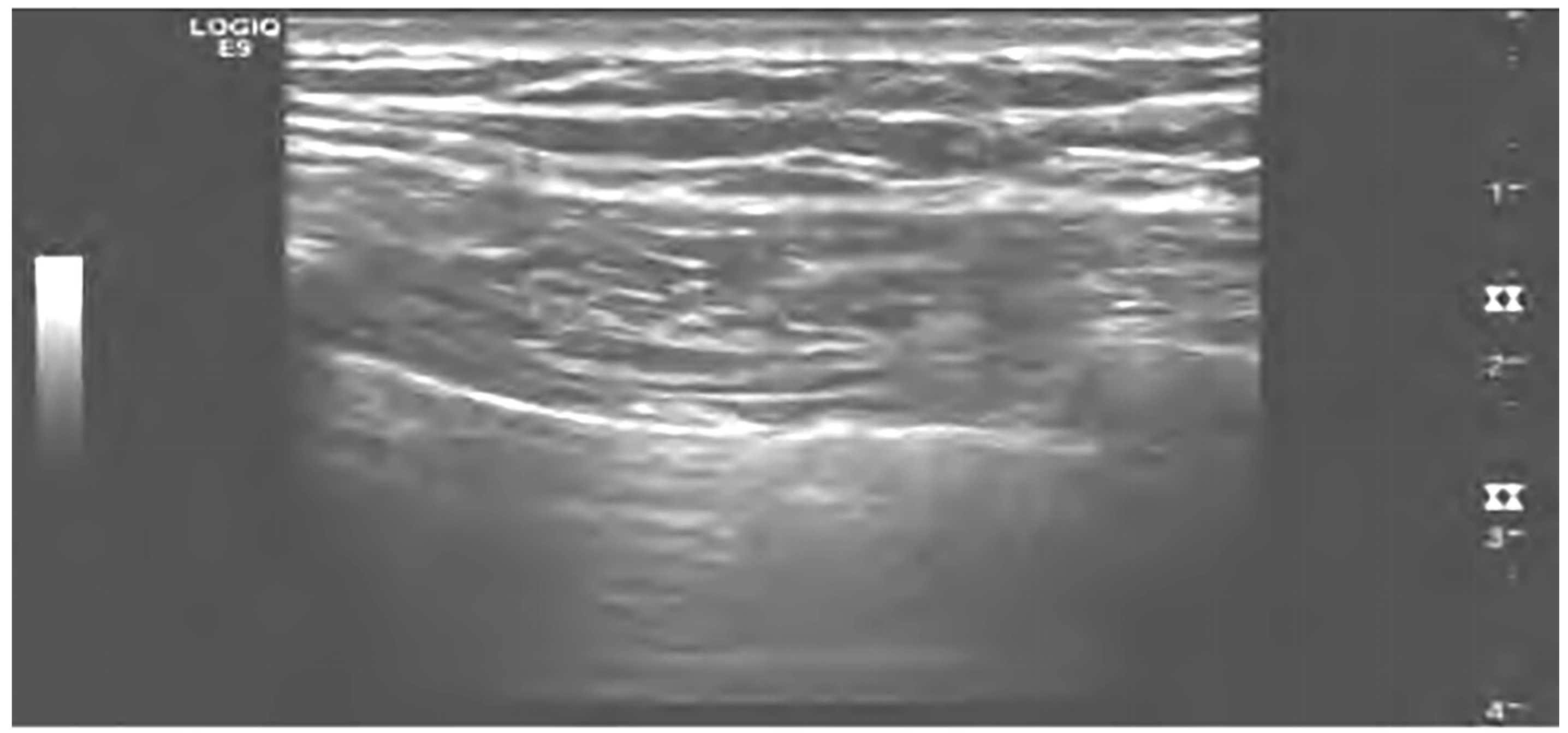Progress in the Application of Portable Ultrasound Combined with Artificial Intelligence in Pre-Hospital Emergency and Disaster Sites
Abstract
1. Introduction
2. Application of Portable Ultrasound in Pre-Hospital Trauma Emergency
2.1. Application of Portable Intelligent Ultrasound in the Diagnosis of Chest Trauma
2.2. Application of Portable Intelligent Ultrasound in the Diagnosis of Abdominal Trauma
2.3. Application of Portable Intelligent Ultrasound in Musculoskeletal Trauma Diagnosis
2.4. Application of Portable Intelligent Ultrasound in the Diagnosis of Craniocerebral Injury
3. Conclusions and Prospects
Author Contributions
Funding
Institutional Review Board Statement
Informed Consent Statement
Data Availability Statement
Conflicts of Interest
References
- Akkus, Z.; Cai, J.; Boonrod, A.; Zeinoddini, A.; Weston, A.D.; Philbrick, K.A.; Erickson, B.J. A Survey of DeepLearning Applications in Ultrasound: Artificial Intelligence-Powered Ultrasound for Improving Clinical Workflow. J. Am. Coll. Radiol. 2019, 16, 1318–1328. [Google Scholar] [CrossRef]
- Zhou, H.; Jin, Y.; Dai, L.; Zhang, M.; Qiu, Y.; Wang, K.; Tian, J.; Zheng, J. Differential Diagnosis of Benign and Malignant Thyroid Nodules Using Deep Learning Radiomics of Thyroid Ultrasound Images. Eur. J. Radiol. 2020, 127, 108992. [Google Scholar] [CrossRef] [PubMed]
- Li, J.; Bu, Y.; Lu, S.; Pang, H.; Luo, C.; Liu, Y.; Qian, L. Development of a Deep Learning-Based Model for Diagnosing Breast Nodules With Ultrasound. J. Ultrasound Med. 2021, 40, 513–520. [Google Scholar] [CrossRef]
- Zhu, Y.C.; AlZoubi, A.; Jassim, S.; Jiang, Q.; Zhang, Y.; Wang, Y.B.; Ye, X.D.; Hongbo, D.U. A generic deep learning framework to classify thyroid and breast lesions in ultrasound images. Ultrasonics 2021, 110, 106300. [Google Scholar] [CrossRef]
- O’Neill, S. Handheld Ultrasound Advances Diagnosis. Engineering 2021, 7, 1505–1507. [Google Scholar] [CrossRef]
- Sempeles, S. Pocket-sized ultrasound device could speed access to images and information. J. Clin. Eng. 2008, 33, 2–3. [Google Scholar] [CrossRef]
- Fröhlich, E.; Beller, K.; Muller, R.; Herrmann, M.; Debove, I.; Klinger, C.; Pauluschke-Fröhlich, J.; Hoffmann, T.; Kreppenhofer, S.; Dietrich, C.F. Point of Care Ultrasound in Geriatric Patients: Prospective Evaluation of a Portable Handheld Ultrasound Device. Ultraschall Med. 2020, 41, 308–316. [Google Scholar] [CrossRef]
- Vilchis, A.; Troccaz, J.; Cinquin, P.; Masuda, K.; Pellissier, F. A new robot architecture for tele-echography. IEEE Trans. Robot. Autom. Spec. Issue Med. Robot. 2003, 19, 922–926. [Google Scholar] [CrossRef]
- Delgorge, C.; Courrèges, F.; Al Bassit, L.; Novales, C.; Rosenberger, C.; Smith-Guerin, N.; Brù, C.; Gilabert, R.; Vannoni, M.; Poisson, G.; et al. A tele-opreated mobile ultrasound scanner using a light-weight robot. IEEE Trans. Inf. Technol. Biomed. 2005, 9, 50–58. [Google Scholar] [CrossRef]
- Ability Building and Continuing Education Center of National Health Committee; Ultrasonic Committee of Trauma, Emergency and Critical Care; Committee of Remote and Mobile Ultrasound, Ultrasonic Equipment Technology Branch, China Associate of Medical Equipment. Expert consensus on application of 5G remote ultrasonic technology. Chin. J. Med. Ultrasound (Electron. Ed.) 2020, 17, 115–123. [Google Scholar]
- Gore, J.C. Artificial intelligence in medical imaging. Magn. Reson. Imaging 2020, 68, A1–A4. [Google Scholar] [CrossRef] [PubMed]
- Coskun, F.; Akinci, E.; Ceyhan, M.A.; Sahin Kavaklı, H. Our new stethoscope in the emergency department: Handheld ultrasound. Ulus. Travma Acil Cerrahi Derg. 2011, 17, 488–492. [Google Scholar] [CrossRef] [PubMed]
- Hinton, G.E.; Salakhutdinov, R.R. Reducing the dimensionality of data with neural networks. Science 2006, 313, 504–507. [Google Scholar] [CrossRef]
- Liu, S.F.; Wang, Y.; Yang, X.; Lei, B.Y.; Liu, L.; Li, H.; Ni, D.; Wang, T.F. Deep learning in medical ultrasound analysis: A review. Engineering 2019, 5, 261–275. [Google Scholar] [CrossRef]
- Brooks, A.J.; Price, V.; Simms, M.; Ward, N.; Hand, C.J. Handheld ultrasound diagnosis of extremity fractures. J. R. Army Med. Corps 2004, 150, 78–80. [Google Scholar] [CrossRef]
- Salerno, A.; Tupchong, K.; Verceles, A.C.; McCurdy, M.T. Point-of-Care Teleultrasound: A Systematic Review. Telemed. e-Health 2020, 26, 1314–1321. [Google Scholar] [CrossRef] [PubMed]
- Ipsen, S.; Wulff, D.; Kuhlemann, I.; Schweikard, A.; Ernst, F. Towards automated ultrasound imaging-robotic image acquisition in liver and prostate for long-term motion monitoring. Phys. Med. Biol. 2021, 66, 094002. [Google Scholar] [CrossRef]
- Wilkinson, J.; Saxhaug, L. Handheld ultrasound in training—The future is getting smaller! J. Intensive Care Soc. 2020, 22, 220–229. [Google Scholar] [CrossRef]
- Chandrashekhara, S.H.; Rangarajan, K.; Agrawal, A.; Thulkar, S.; Gamanagatti, S.; Raina, D.; Saha, S.K.; Arora, C. Robotic ultrasound: An initial feasibility study. World J. Methodol. 2022, 12, 274–284. [Google Scholar] [CrossRef]
- von Haxthausen, F.; Böttger, S.; Wulff, D.; Hagenah, J.; García-Vázquez, V.; Ipsen, S. Medical Robotics for Ultrasound Imaging: Current Systems and Future Trends. Curr. Robot. Rep. 2021, 2, 55–71. [Google Scholar] [CrossRef]
- Monfaredi, R.; Wilson, E.; Azizi Koutenaei, B.; Labrecque, B.; Leroy, K.; Goldie, J.; Louis, E.; Swerdlow, D.; Cleary, K. Robot-assisted ultrasound imaging: Overview and development of a parallel telerobotic system. Minim. Invasive Ther. Allied Technol. 2015, 24, 54–62. [Google Scholar] [CrossRef]
- Soni, N.J.; Boyd, J.S.; Mints, G.; Proud, K.C.; Jensen, T.P.; Liu, G.; Mathews, B.K.; Schott, C.K.; Kurian, L.; LoPresti, C.M.; et al. Comparison of in-person versus tele-ultrasound point-of-care ultrasound training during the COVID-19 pandemic. Ultrasound J. 2021, 13, 39. [Google Scholar] [CrossRef] [PubMed]
- Barinov, L.; Jairaj, A.; Becker, M.; Seymour, S.; Lee, E.; Schram, A.; Lane, E.; Goldszal, A.; Quigley, D.; Paster, L. Impact of data presentation on physician performance utilizing artificial intelligence-based computer-aided diagnosis and decision support systems. J. Digit. Imaging 2019, 32, 408–416. [Google Scholar] [CrossRef] [PubMed]
- Robert, S.; Parent, M.C. BET 2: Is prehospital focused abdominal ultrasound useful during triage at mass casualty incidents? Emerg. Med. J. 2013, 30, 596–597. [Google Scholar]
- Sajed, D. The history of point-of-care ultrasound use in disaster and mass casualty incidents. AMA J. Ethics 2010, 12, 744–749. [Google Scholar]
- Einav, S.; Aharonson-Daniel, L.; Weissman, C.; Freund, H.R.; Peleg, K. Israel Trauma Group.In-hospital resource utilization during multiple casualty incidents. Ann. Surg. 2006, 243, 533–540. [Google Scholar] [CrossRef]
- Sarkisian, A.E.; Khondkarian, R.A.; Amirbekian, N.M.; Bagdasarian, N.B.; Khojayan, R.L.; Oganesian, Y.T. Sonographic screening of mass casualties for abdominal and renal injuries following the 1988 Armenian earthquake. J. Trauma 1991, 31, 247–250. [Google Scholar] [CrossRef]
- Blaivas, M. Triage in the trauma bay with the focused abdominal sonography for trauma (FAST) examination. J. Emerg. Med. 2001, 21, 41–44. [Google Scholar] [CrossRef]
- Ma, O.J.; Norvell, J.G.; Subramanian, S. Ultrasound applications in mass casualties and extreme environments. Crit. Care Med. 2007, 35, S275–S279. [Google Scholar] [CrossRef]
- Dean, A.J.; Ku, B.S.; Zeserson, E.M. The utility of handheld ultrasound in an austere medical setting in Guatemala after a natural disaster. Am. J. Disaster Med. 2007, 2, 249–256. [Google Scholar] [CrossRef]
- He, Z.J.; Ma, J.X. On the timeliness of combat trauma first aid. PLA Med. J. 2005, 30, 566–567. [Google Scholar]
- Brooks, A.J.; Price, V.; Simms, M. FAST on operational military deployment. Emerg. Med. J. 2005, 22, 263–265. [Google Scholar] [CrossRef] [PubMed]
- O’Dochartaigh, D.; Douma, M. Prehospital ultrasound of the abdomen and thorax changes trauma patient management: A systematic review. Injury 2015, 46, 2093–2102. [Google Scholar] [CrossRef] [PubMed]
- Wydo, S.M.; Seamon, M.J.; Melanson, S.W.; Thomas, P.; Bahner, D.P.; Stawicki, S.P. Portable ultrasound in disaster triage: A focused review. Eur. J. Trauma Emerg. Surg. 2016, 42, 151–159. [Google Scholar] [CrossRef]
- Shorter, M.; Macias, D.J. Portable handheld ultrasound in austere environments: Use in the Haiti disaster. Prehospital Disaster Med. 2012, 27, 172–177. [Google Scholar] [CrossRef]
- Zhang, S.; Zhu, D.; Wan, Z.; Cao, Y. Utility of point-of-care ultrasound in acute management triage of earthquake injury. Am. J. Emerg. Med. 2014, 32, 92–95. [Google Scholar] [CrossRef]
- Laursen, C.B.; Sloth, E.; Lassen, A.T.; Christensen, R.d.; Lambrechtsen, J.; Madsen, P.H.; Henriksen, D.P.; Davidsen, J.R.; Rasmussen, F. Point-of-care ultrasonography in patients admitted with respiratory symptoms: A single-blind, randomized controlled trial. Lancet Respir. Med. 2014, 2, 638–646. [Google Scholar] [CrossRef] [PubMed]
- Zanobetti, M.; Poggioni, C.; Pini, R. Can chest ultrasonography replace standard chest radiography for evaluation of acute dyspnea in the ED? Chest 2011, 139, 1140–1147. [Google Scholar] [CrossRef]
- Gleeson, T.; Blehar, D. Point-of-care ultrasound in trauma. Semin. Ultrasound CT MRI 2018, 39, 374–383. [Google Scholar] [CrossRef]
- Holmes, J.F.; Harris, D.; Battistella, F.D. Performance ofabdominal ultrasonography in blunt trauma patients with out-of-hospital or emergency department hypotension. Ann. Emerg. Med. 2004, 43, 354–361. [Google Scholar] [CrossRef] [PubMed]
- Whitson, M.R.; Mayo, P.H. Ultrasonography in the emergency department. Crit. Care 2016, 20, 227–234. [Google Scholar] [CrossRef] [PubMed]
- Marchetti, G.; Arondi, S.; Baglivo, F.; Lonni, S.; Quadri, F.; Valsecchi, A.; Venturoli, N.; Ceruti, P. New insights in the use of pleural ultrasonography for diagnosis and treatment of pleural disease. Clin. Respir. J. 2018, 12, 1993–2005. [Google Scholar] [CrossRef] [PubMed]
- Plummer, D.; Brunette, D.; Asinger, R.; Ruiz, E. Emergency department echocardiography improves outcome in penetrating cardiac injury. Ann. Emerg. Med. 1992, 21, 709–712. [Google Scholar] [CrossRef]
- Maury, É.; Pichereau, C.; Bourcier, S.; Galbois, A.; Lejour, G.; Baudel, J.L.; Ait-Oufella, H.; Guidet, B. Diagnostic échographique du pneumothorax Diagnostic ultrasound in pneumothorax. Rev. Mal. Respir. 2016, 33, 682–691. [Google Scholar] [CrossRef] [PubMed]
- Stoitsis, J.; Golemati, S.; Nikita, K.S. A modular software system to assist interpretation of medical images-application to vascular ultrasound images. IEEE Trans. Instrum. Meas. 2006, 55, 1944–1952. [Google Scholar] [CrossRef]
- Cook, M.R.; Holcomb, J.B.; Rahbar, M.H.; Fox, E.E.; Alarcon, L.H.; Bulger, E.M.; Brasel, K.J.; Schreiber, M.A.; PROMMTT Study Group. An abdominal computed tomography may be safe in selected hypotensive trauma patients with positive focused assessment with sonography in trauma examination. Am. J. Surg. 2015, 209, 834–840. [Google Scholar] [CrossRef]
- Brown, M.A.; Casola, G.; Sirlin, C.B. Blunt abdominal trauma: Screening US in 2693 patients. Radiology 2001, 218, 352–358. [Google Scholar] [CrossRef]
- Mondillo, S.; Galderisi, M. Hand-held echocardiography in clinical practice. Ital. Heart J. Suppl. 2005, 6, 265–271. [Google Scholar]
- Sjogren, A.R.; Leo, M.M.; Feldman, J.; Gwin, J.T. Image Segmentation and machine learning for detection of abdominal free fluid in focused assessment with sonography for trauma examinations: A pilot study. J. Ultrasound Med. 2016, 35, 2501–2509. [Google Scholar] [CrossRef]
- Nelson, B.P.; Chason, K. Use of ultrasound by emergency medical services: A review. Int. J. Emerg. Med. 2008, 1, 253–259. [Google Scholar] [CrossRef]
- Polena, V.; Huchon, C.; Varas Ramos, C.; Rouzier, R.; Dumont, A.; Fauconnier, A. Non-invasive tools for the diagnosis of potentially life-threatening gynaecological emergencies: A systematic review. PLoS ONE 2015, 10, e0114189. [Google Scholar] [CrossRef]
- El Zahran, T.; El Sayed, M.J. Prehospital Ultrasound in Trauma: A Review of Current and Potential Future Clinical Applications. J. Emerg. Trauma Shock 2018, 11, 4–9. [Google Scholar] [CrossRef] [PubMed]
- Nazerian, P.; Tozzetti, C.; Vanni, S.; Bartolucci, M.; Gualtieri, S.; Trausi, F.; Vittorini, M.; Catini, E.; Cibinel, G.A.; Grifoni, S. Accuracy of abdominal ultrasound for the diagnosis of pneumoperitoneum in patients with acute abdominal pain: A pilot study. Crit. Ultrasound J. 2015, 7, 15. [Google Scholar] [CrossRef]
- Valentino, M.; De Luca, C.; Galloni, S.S.; Branchini, M.; Modolon, C.; Pavlica, P.; Barozzi, L. Contrast-enhanced US evaluation in patients with blunt abdominaltrauma. J. Ultrasound 2010, 13, 22–27. [Google Scholar] [CrossRef] [PubMed]
- Jiang, X.; Luo, Y.; He, X.; Wang, K.; Song, W.; Ye, Q.; Feng, L.; Wang, W.; Hu, X.; Li, H. Development and validation of the diagnostic accuracy of artificial intelligence-assisted ultrasound in the classification of splenic trauma. Ann. Transl. Med. 2022, 10, 1060. [Google Scholar] [CrossRef]
- Pavlopoulos, S.; Kyriacou, E.; Koutsouris, D.; Blekas, K.; Stafylopatis, A.; Zoumpoulis, P. Fuzzy neural network-based texture analysis of ultrasonic images. IEEE Eng. Med. Biol. Mag. 2000, 19, 39–47. [Google Scholar] [CrossRef]
- Stawicki, S.P.; Howard, J.M.; Pryor, J.P.; Bahner, D.P.; Whitmill, M.L.; Dean, A.J. Portable ultrasonography in mass casualty incidents: The CAVEAT examination. World J. Orthop. 2010, 1, 10–19. [Google Scholar] [CrossRef]
- Zhao, J.; Zhang, J.; Xu, Q.; Sheng, J.; Diao, Z.; Liu, S. Quantitative evaluation of striated muscle injury by multiscale blob features method. J. Med. Ultrason. 2016, 43, 337–345. [Google Scholar] [CrossRef]
- Moser, F.; Huang, R.; Papież, B.W.; Namburete, A.I.; INTERGROWTH-21st Consortium. BEAN: Brain Extraction and Alignment Network for 3D Fetal Neurosonography. NeuroImage 2022, 258, 119341. [Google Scholar] [CrossRef] [PubMed]
- Wu, T.S.; Roque, P.J.; Green, J.; Drachman, D.; Khor, K.N.; Rosenberg, M.; Simpson, C. Bedside ultrasound evaluation of tendon injuries. Am. J. Emerg. Med. 2012, 30, 1617–1621. [Google Scholar] [CrossRef]
- Kirkpatrick, A.W.; Sirois, M.; Laupland, K.B.; Liu, D.; Rowan, K.; Ball, C.G.; Hameed, S.M.; Brown, R.; Simons, R.; Dulchavsky, S.A.; et al. Hand-held thoracic sonography for detecting post-traumatic pneumothoraces: The extended focused assessment with sonography for trauma (EFAST). J. Trauma 2004, 57, 288–295. [Google Scholar] [CrossRef] [PubMed]
- Giannotti, G.; Mondillo, S.; Galderisi, M.; Barbati, R.; Zacà, V.; Ballo, P.; Agricola, E.; Guerrini, F. Hand-held echocardiography: Added value in clinical cardiological assessment. Cardiovasc. Ultrasound 2005, 3, 7. [Google Scholar] [CrossRef][Green Version]
- Feng, C.; Wang, L.; Huang, S.; Wang, L.; Zhou, X.; Cui, X.; Chen, L.; Lv, F.; Li, T. Application of ContrastEnhanced Real-time 3-Dimensional Ultrasound in Solid Abdominal Organ Trauma. J. Ultrasound Med. 2020, 39, 869–874. [Google Scholar] [CrossRef] [PubMed]
- Liu, Y.H.; Lyu, F.Q.; Li, T.S. The advent of 5G era: Current situation and development of remote ultrasound. Chin. J. Med. Ultrasound (Electron. Ed.) 2019, 16, 241–243. [Google Scholar]
- Hemmerling, T.M.; Taddei, R.; Wehbe, M.; Cyr, S.; Zaouter, C.; Morse, J. First robotic ultrasound-guided nerve blocks in humans using the Magellan system. Anesth. Analg. 2013, 116, 491–494. [Google Scholar] [CrossRef]
- Rabie, N.Z.; Sandlin, A.T.; Barber, K.A.; Ounpraseuth, S.; Nembhard, W.; Magann, E.F.; Lowery, C. Teleultrasound: How accurate are we? J. Ultrasound Med. 2017, 36, 2329–2335. [Google Scholar] [CrossRef]
- Lv, F.Q. Remote ultrasound and its application Prospect of 5G. Chin. J. Med. Ultrasound (Electron. Ed.) 2019, 16, 320. [Google Scholar]
- Jiang, W.; Zhao, X.; Gan, T.; Liu, Y.; Luo, S.; Zhu, M.; Chen, S.; Jiang, Y.; Wu, M. Application of Tele-Ultrasound Robot during COVID-19 Pandemic: A Feasibility Study. J. Ultrasound Med. 2022, 42, 595–601. [Google Scholar] [CrossRef]
- Harrison, G.; Harris, A. Work-related musculoskeletal disorders in ultrasound: Can you reduce risk? Ultrasound 2015, 23, 224–230. [Google Scholar] [CrossRef] [PubMed]




| Portable Handheld Device | High-End Ultrasound Device | |
|---|---|---|
| Portability | Easily | Not easy |
| Prime cost | Low | High |
| Application scenarios | Primary hospital, trauma emergency treatment scene | Hospital clinic |
| Image quality | Not good | Preferably |
| Operability | Ordinary doctor | Ultrasound professional doctor |
| Injury Sites | Fatal Injury Types |
|---|---|
| Head and face | Brain stem injury, diffuse cerebral contusion, intracranial hemorrhage |
| Neck | Carotid artery dissection, high spinal cord injury |
| Thoracic cavity | Tension pneumothorax, rupture of a large blood vessel in the chest, rupture of the heart, pericardial tamponade |
| Abdomen | Hepatic and splenic rupture, abdominal aortic rupture, kidney injury |
| Pelvic cavity | Pelvic fracture with rupture of the common iliac artery |
| Arms and legs | Amputation bleeding, crush syndrome |
Disclaimer/Publisher’s Note: The statements, opinions and data contained in all publications are solely those of the individual author(s) and contributor(s) and not of MDPI and/or the editor(s). MDPI and/or the editor(s) disclaim responsibility for any injury to people or property resulting from any ideas, methods, instructions or products referred to in the content. |
© 2023 by the authors. Licensee MDPI, Basel, Switzerland. This article is an open access article distributed under the terms and conditions of the Creative Commons Attribution (CC BY) license (https://creativecommons.org/licenses/by/4.0/).
Share and Cite
Gao, X.; Lv, Q.; Hou, S. Progress in the Application of Portable Ultrasound Combined with Artificial Intelligence in Pre-Hospital Emergency and Disaster Sites. Diagnostics 2023, 13, 3388. https://doi.org/10.3390/diagnostics13213388
Gao X, Lv Q, Hou S. Progress in the Application of Portable Ultrasound Combined with Artificial Intelligence in Pre-Hospital Emergency and Disaster Sites. Diagnostics. 2023; 13(21):3388. https://doi.org/10.3390/diagnostics13213388
Chicago/Turabian StyleGao, Xing, Qi Lv, and Shike Hou. 2023. "Progress in the Application of Portable Ultrasound Combined with Artificial Intelligence in Pre-Hospital Emergency and Disaster Sites" Diagnostics 13, no. 21: 3388. https://doi.org/10.3390/diagnostics13213388
APA StyleGao, X., Lv, Q., & Hou, S. (2023). Progress in the Application of Portable Ultrasound Combined with Artificial Intelligence in Pre-Hospital Emergency and Disaster Sites. Diagnostics, 13(21), 3388. https://doi.org/10.3390/diagnostics13213388






